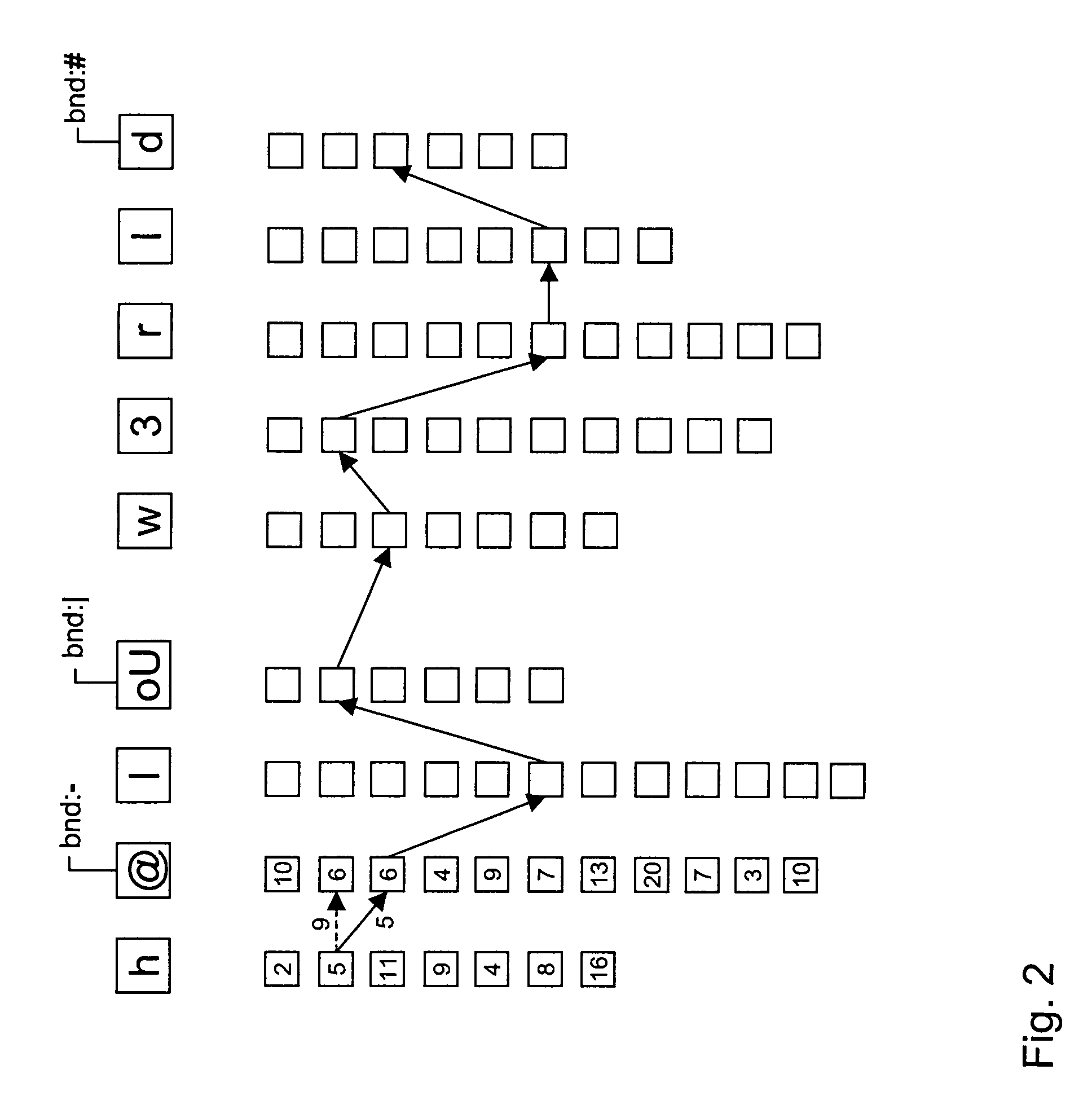Text to speech synthesis
a text-to-speech technology, applied in the field of text-to-speech technology, can solve the problems of sudden changes in signal, high concatenation cost, speech synthesis is the underspecification of information in input text compared to information in output waveform, etc., and achieve the effect of fast working way
- Summary
- Abstract
- Description
- Claims
- Application Information
AI Technical Summary
Benefits of technology
Problems solved by technology
Method used
Image
Examples
Embodiment Construction
[0054]FIG. 3 shows an embodiment with an alternative unit sequences constructor module. The constructor module explores the space of suitable unit sequences in a predetermined way, by deriving a plurality of target unit sequences and / or by varying the unit selection cost functions. The alternative output waveforms created by the constructor module result from different runs through the steps of target unit specification, unit selection and concatenation. Any run can be used as feedback to modify target units or cost functions to create alternative output waveforms. This feedback is indicated by arrows interconnecting the steps of target unit specification and unit selection for different unit selection runs.
[0055]FIG. 4 explains the construction in more detail for the example text “hello world”. The alternative unit sequences are generated separately for each word. The first alternative unit sequence—named “standard”—corresponds to the default behaviour of the TTS system. The second...
PUM
 Login to View More
Login to View More Abstract
Description
Claims
Application Information
 Login to View More
Login to View More - R&D
- Intellectual Property
- Life Sciences
- Materials
- Tech Scout
- Unparalleled Data Quality
- Higher Quality Content
- 60% Fewer Hallucinations
Browse by: Latest US Patents, China's latest patents, Technical Efficacy Thesaurus, Application Domain, Technology Topic, Popular Technical Reports.
© 2025 PatSnap. All rights reserved.Legal|Privacy policy|Modern Slavery Act Transparency Statement|Sitemap|About US| Contact US: help@patsnap.com



